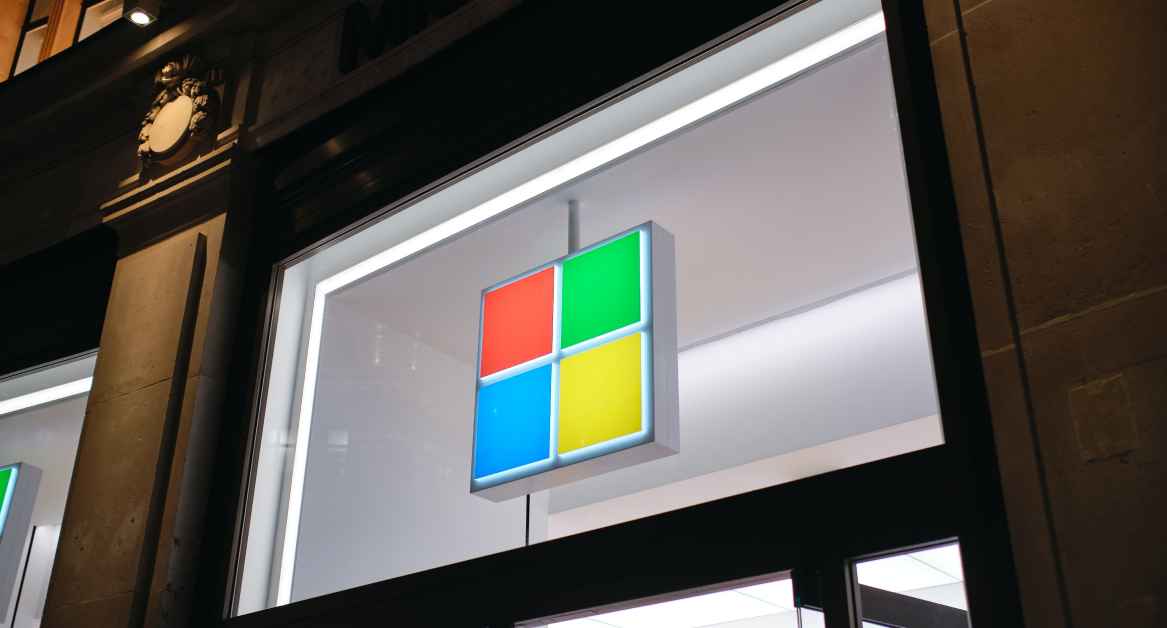Shipping a laptop from the US to the UK may seem straightforward, but it involves navigating customs regulations, shipping services, and packaging requirements to ensure safe delivery.
Whether you’re a business shipping laptops for remote employees or an individual sending a personal device, understanding the international laptop shipping process can save you time, money, and unnecessary stress.
How do you avoid customs delays?
What’s the most cost-effective shipping method?
How do you protect your laptop from damage during transit?
We’ve got all the answers below 💡
Understanding regulations for corporate laptop shipping
Shipping electronic devices like laptops from the US to the UK involves complying with customs regulations, tax requirements, and safety guidelines.
Failure to follow these rules could lead to delays, additional fees, or shipment rejection. Here’s what businesses need to know before shipping a laptop internationally.
Customs regulations in the UK
The UK customs authority (HM Revenue & Customs – HMRC) has specific rules for importing laptops. Businesses and individuals must provide the correct documentation to avoid shipment delays.
- Tariff classification – Laptops typically fall under HS Code 8471, which determines the applicable duties and VAT.
- Required documentation – You must include a commercial invoice detailing the laptop’s make, model, value, and intended use.
- Regulatory compliance – If the laptop contains high-end encryption software, it may be subject to additional scrutiny under UK cybersecurity laws.
- Restricted components – Some laptops may contain materials like certain encryption software or restricted lithium-ion batteries that require special clearance.
Failure to accurately declare your shipment can lead to customs rejection or unexpected duties.
Duties and taxes in the UK
Importing laptops into the UK comes with certain taxes and duties that businesses should factor into their shipping budget.
- Value added tax (VAT) – The UK charges 20% VAT on imported laptops, calculated based on the declared value plus shipping costs.
- Customs duty – Under the UK Global Tariff (UKGT), most laptops are duty-free, meaning businesses won’t have to pay extra import duties.
- Handling fees – Couriers like DHL, FedEx, and UPS often charge brokerage or handling fees for processing customs clearance.
Restricted items
Laptops contain lithium-ion batteries, which are considered hazardous materials under international shipping laws. To comply with IATA (International Air Transport Association) regulations, businesses must:
- Ensure lithium-ion batteries are installed inside the laptop rather than shipped separately.
- Use proper cushioning material like packing peanuts and bubble wrap to prevent movement inside the shipping box.
- Place the laptop in an anti-static plastic bag for extra protection.
- Label the package with hazardous material indicators if necessary.
Cost of shipping laptops from the US to the UK for businesses
Shipping a laptop from the US to the UK involves more than just courier fees. Businesses need to account for customs duties, packaging, insurance, and potential hidden costs. Here’s a breakdown of what to expect.
Courier fees
The cost of shipping a laptop depends on the carrier, delivery speed, and additional services like insurance and tracking. Below are estimated prices from major shipping services:
- UPS – Shipping a standard 3–5 lb laptop from the US to the UK costs between $80 and $150, depending on whether you choose standard or express delivery.
- FedEx – Prices range from $90 to $170, with express options available for urgent deliveries.
- DHL – Expect to pay between $85 and $160, with a focus on fast, reliable international shipping.
- USPS – A more cost-effective option, with rates starting at $70 for slower services and up to $140 for faster delivery.
Using a corporate shipping account with one of these couriers can help businesses access discounted rates and priority services.
Customs duties and taxes in the UK
When importing laptops into the UK, businesses must factor in taxes and duties, which are calculated based on the declared value of the device.
- VAT – The UK charges 20% VAT on the total cost, which includes the laptop’s value, shipping fees, and insurance.
- Customs duty – Most laptops are duty-free under the UK Global Tariff (UKGT), but it’s important to check for any changes in tariff classifications before shipping.
- Brokerage fees – If you use a courier’s customs brokerage service, they may charge an additional fee to process the shipment.
Packaging and insurance costs
Proper packaging is crucial to ensure safe shipping, especially when handling fragile electronic devices. Here’s what to include:
- Layer of bubble wrap – Wrap the laptop securely to protect it from impact.
- Cushioning material – Use packing peanuts or foam inserts inside the shipping box to prevent movement.
- Plastic bag – Place the laptop in an anti-static bag to prevent moisture damage.
- Strong shipping box – Choose a sturdy, well-sealed box to withstand rough handling.
Insurance is also recommended, especially for high-value laptops.
- Basic coverage – Most couriers include $100 of coverage in their base price.
- Additional insurance – If the laptop’s value exceeds $100, you can purchase extra coverage, typically costing 1–3% of the declared value.

Hidden costs to watch for
Businesses should be aware of additional costs that can increase the total shipping expense:
- Storage fees – If customs clearance is delayed, the destination country may charge storage fees.
- Re-delivery charges – Some couriers charge extra if the first delivery attempt fails and they have to reattempt.
- Customs delays – Incorrect paperwork can lead to delays, adding time and cost to the shipping process.
- Currency exchange rates – If paying VAT and customs duties in GBP, factor in currency conversion fees.
Preparing for these extra costs can help businesses budget more accurately and avoid unexpected expenses.
Step-by-step corporate shipping process
1. Choose a reliable shipping service
Select a courier that specializes in international shipping and offers services tailored for electronic devices. Major carriers like UPS, FedEx, DHL, and USPS provide various shipping options based on delivery speed and budget.
- Express shipping (1–3 business days) – Ideal for urgent shipments but comes at a higher cost.
- Standard shipping (5–10 business days) – A more cost-effective option for non-urgent deliveries.
- Freight services – Suitable for bulk laptop shipments.
Using a corporate shipping account can provide discounted rates and better tracking.
2. Prepare the required documentation
To avoid customs delays, ensure all paperwork is accurate and complete. You’ll need:
- Commercial invoice – Lists the laptop’s make, model, value, and purpose (business or personal use).
- Packing list – Details the contents of the shipment, including accessories.
- Customs declaration forms – Required by the destination country for clearance.
Failure to include proper documentation may result in delays, additional duties, or shipment rejection.
3. Package the laptop securely
Proper packaging is essential for safe shipping. Follow these steps to protect the device:
- Wrap the laptop in a layer of bubble wrap for cushioning.
- Use an anti-static plastic bag to prevent moisture damage.
- Fill the shipping box with cushioning material like packing peanuts or foam inserts to prevent movement.
- Ensure the laptop is placed snugly inside a sturdy shipping box.
- Seal the box securely with heavy-duty packing tape.
4. Insure your shipment
For high-value items, consider purchasing shipping insurance to protect against loss, damage, or theft. Most couriers offer basic coverage ($100), with additional insurance available at 1–3% of the declared value.
5. Label the package correctly
Clearly mark the package with:
- Recipient’s full name and address
- Return address
- Customs information and tracking number
- Handling instructions (e.g., “Fragile” or “This Side Up”)
6. Track your shipment
Use the courier’s tracking system to monitor the package in real time. If delays occur, check for customs clearance issues and contact the shipping service if necessary.
7. Confirm delivery
Once the laptop reaches its destination, have the recipient:
- Inspect the package for damage
- Confirm all accessories are included
- Sign for the shipment
Following these steps ensures a smooth and efficient laptop shipment from the US to the UK.
Choosing the right shipping service
Express vs. standard shipping
The choice between express and standard shipping depends on how quickly the laptop needs to arrive and the shipping budget.
- Express shipping (1–3 business days) – This is ideal for urgent deliveries. Services like FedEx International Priority, UPS Express, and DHL Express offer fast shipping but at a premium cost.
- Standard shipping (5–10 business days) – More affordable but slower. UPS Standard, FedEx Economy, and USPS Priority Mail International are commonly used for cost-effective shipping.
If speed is a priority, express shipping is the best choice. If the shipment isn’t time-sensitive, standard shipping helps save costs.
Corporate partnerships with couriers
For businesses that frequently ship laptops, setting up a corporate account with a shipping provider can offer:
- Discounted rates on bulk shipments
- Priority handling and tracking for international deliveries
- Dedicated customer support for troubleshooting shipping issues
Couriers like FedEx, UPS, and DHL provide business accounts that offer negotiated rates and streamlined logistics.
Door-to-door vs. centralized delivery
Businesses shipping laptops for remote employees have two main delivery options:
- Door-to-door shipping – Laptops are sent directly to the recipient’s address. This is convenient but may involve higher shipping costs.
- Centralized delivery – Devices are shipped in bulk to a company’s UK office or a distribution center, from where they are sent to employees. This method is cost-effective for large-scale shipments.
The right method depends on the number of laptops being shipped and the business’s logistics strategy.
Customs brokerage services
To avoid customs clearance delays, businesses can work with a customs broker who specializes in international shipping. A broker helps with:
- Accurate documentation to ensure smooth processing
- Duty and tax calculations to prevent unexpected fees
- Compliance with UK import regulations
Some couriers offer customs brokerage services, making it easier for businesses to handle cross-border shipping.
Preparing your laptop for shipping
Proper preparation ensures that a laptop reaches its destination country safely and without delays. Using the right packing material and following international shipping guidelines can help prevent damage, customs issues, or rejected shipments.
Back up and secure your data
Before shipping a laptop, it’s important to back up all important files and secure the device.
- Save data to an external hard drive or cloud storage
- Log out of all accounts and remove sensitive information
- Enable device tracking (if available) to locate the laptop in case of loss
- Consider removing or encrypting sensitive company data for security
Power down and disconnect accessories
For safe shipping, the laptop should be turned off and all accessories removed.
- Power down the device completely
- Disconnect the charger, mouse, and any external storage devices
- Place all accessories in a separate plastic bag to keep them organized
Use proper packaging materials
Laptops are fragile and require secure packaging to protect them from impact during transit. Use these steps for safe shipping:
- Wrap the laptop in a layer of bubble wrap to cushion against shocks
- Place it in an anti-static plastic bag to prevent moisture or electrical damage
- Use cushioning material like packing peanuts or foam inserts inside the box to prevent movement
- Choose a sturdy shipping box that fits the laptop snugly but allows room for protective padding
- Seal the box securely with strong packing tape
If shipping multiple laptops, ensure each device is packed separately within a larger shipping box to avoid friction and potential damage.
Label the package correctly
Proper labeling helps customs and couriers process the package efficiently.
- Clearly print the recipient’s name, address, and contact number
- Include the return address in case of delivery issues
- Mark the package with “Fragile – Handle With Care” stickers
- Indicate the presence of lithium-ion batteries, if required by the courier
Choose a reliable shipping service
Once the laptop is packed, select a shipping service that offers:
- Tracking options for real-time updates
- Insurance coverage in case of loss or damage
- Customs assistance to streamline clearance
Taking these precautions helps ensure the laptop arrives safely and on time.
Tips and tricks for shipping a laptop from the US to the UK
Shipping a laptop internationally comes with challenges like customs delays, damage during transit, and unexpected fees. Here are some expert tips to ensure a smooth, cost-effective, and secure shipping process.
Use high-quality packaging materials
Laptops are fragile and can easily get damaged in transit. To ensure safe shipping, always:
- Wrap the laptop in a layer of bubble wrap to absorb shocks
- Place the device inside an anti-static plastic bag to prevent moisture damage
- Fill empty spaces in the shipping box with packing peanuts or foam inserts
- Use a double-box method for extra protection if shipping an expensive laptop
- Secure the package with heavy-duty packing tape to prevent it from opening
Follow lithium-ion battery shipping regulations
Laptops contain lithium-ion batteries, which are classified as hazardous materials in international shipping. To avoid issues:
- Keep the battery installed in the laptop rather than shipping it separately
- Label the package as containing “Lithium-ion Batteries – Handle With Care” if required
- Check with your courier for specific battery restrictions before shipping
Choose a cost-effective shipping method
If speed isn’t a concern, opt for a more affordable shipping service:
- Standard shipping (5–10 business days) costs less than express options
- Bulk shipments can save money if sending multiple laptops at once
- Freight shipping may be better for larger business shipments
Keep track of customs documentation
To prevent customs delays in the destination country, ensure:
- The commercial invoice includes an accurate description of the laptop
- VAT and import taxes are calculated correctly to avoid surprises
- Customs declaration forms are filled out properly
Insure high-value shipments
Laptops are expensive, so consider shipping insurance for added security:
- Most couriers provide basic coverage ($100) for free
- Additional insurance can be purchased at 1–3% of the laptop’s value
- If the laptop is lost or damaged, file a claim with the courier immediately
Plan for possible delivery delays
International shipments can face unpredictable delays due to customs processing, weather, or logistics issues. To minimize risks:
- Ship the laptop at least a week in advance if needed by a certain date
- Use a courier with customs brokerage services for faster clearance
- Track the shipment closely and contact customer service if issues arise
Hassle-free laptop shipping—let Esevel handle it!
Shipping a laptop from the US to the UK requires careful planning, secure packaging, and compliance with customs regulations.
For distributed teams, the process can become even more complex, with multiple shipments, customs requirements, and cost considerations. Esevel simplifies the entire IT equipment shipping process, ensuring that your laptops are securely packaged, shipped efficiently, and delivered to your remote employees without the usual headaches.
With Esevel, you get:
- End-to-end laptop shipping and IT procurement
- Secure packaging and compliance with shipping regulations
- Customs clearance assistance to prevent delays
- Real-time tracking and device management
5 frequently asked questions (FAQs)
1. What is the best way to ship a laptop from the US to the UK?
The best way to ship a laptop is through a reliable international courier like FedEx, UPS, DHL, or USPS. Choosing express shipping ensures faster delivery, while standard shipping is more cost-effective for non-urgent shipments.
Or if you’re shipping laptops for remote employees or business operations, Esevel can handle device procurement, secure shipping, and IT setup across multiple locations, simplifying the process.
2. Do I need to pay customs duties and taxes when shipping a laptop to the UK?
Yes,
UK customs charges a 20% VAT on imported laptops. However, most laptops are duty-free under the UK Global Tariff. Additional brokerage or handling fees may apply, depending on the courier.
3. Can I ship a laptop with a lithium-ion battery?
Yes,
but lithium-ion batteries are classified as hazardous materials. To comply with IATA regulations, ensure the battery is installed in the laptop, pack it securely, and check the courier’s specific battery shipping guidelines.
4. How much does it cost to ship a laptop from the US to the UK?
Shipping costs vary based on weight, courier, and delivery speed.
- UPS, FedEx, and DHL express services: $90–$170
- USPS standard shipping: $70–$140
- Additional insurance, customs fees, and packaging costs may apply
5. How can Esevel help businesses with international laptop shipping?
Esevel offers end-to-end IT equipment management, handling procurement, secure shipping, customs compliance, and real-time tracking. Businesses can ship laptops to remote employees seamlessly without worrying about logistics, taxes, or delays.







